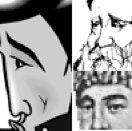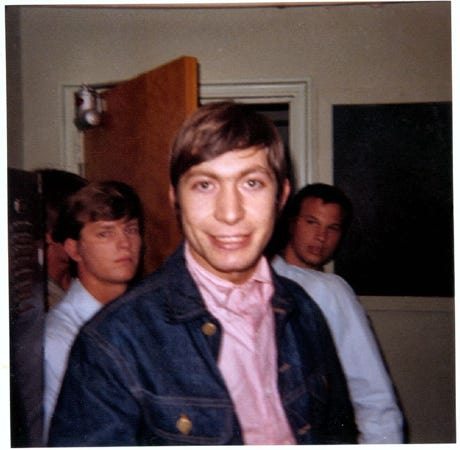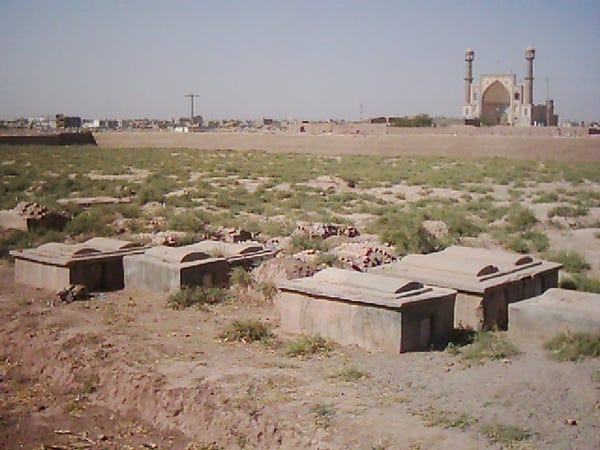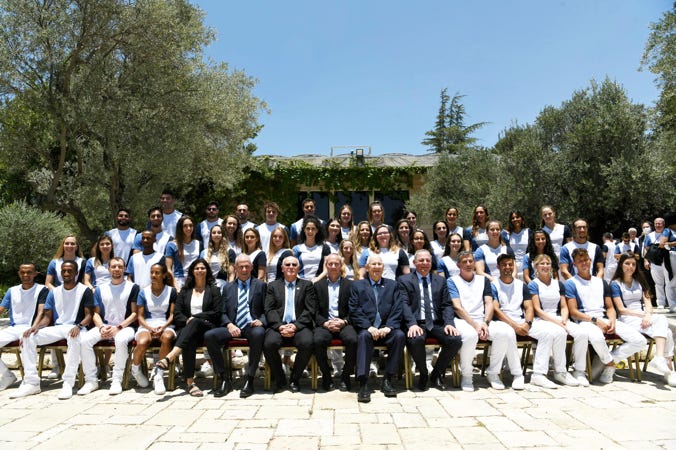With the imminent final withdrawal of American troops from Afghanistan, the Taliban is quickly taking control of the country. The Jewish history of Afghanistan goes back at least to the 7th century, with some claiming that Afghani Jews were descendants of the so-called lost tribes of Israel. Jewish life eventually settled primarily in the community of Herat, though there was a Jewish quarter in Kabul in the 12th century. Most Afghani Jews fled the country in the 1900’s because of an oppressive regime which had forced them into ghetto-like conditions, where they were subjected to riots, rape, and forced conversion. Most emigrated to the United States and Palestine (and after 1948 to Israel). Which of the following is true about the Afghani Jewish population?
Herat_Jews_Cemetery is in the Public domain, via Wikimedia Commons
A. Dost Mohammed Khan was the founder of the Barakzai dynasty in Kabul in the early 19th century, gaining the title Emir of Afghanistan in 1823. Unlike many earlier leaders of Afghanistan, Khan was relatively accepting of the Jewish community, and in fact a Jewish merchant, Yacob Nasirov, was appointed Chief Minister by Khan in 1832.
B. While there is much speculation that Noah’s ark came to rest on Mt. Ararat in western Turkey, there is an opposing view that has long been held by Afghani Jews, that Noah’s ark came to rest on the Sakar Sak peak in the Hindu Kush mountain range of western Afghanistan. While no archaeological evidence has been found to support this theory, it is known that early Jewish merchants traveled across this range on the Silk Road trading route between China and the Mediterranean region, dating to the period of the Temple in Jerusalem.
C. In addition to the Jewish community in Afghanistan, up until the early 20th century there was also a small group of Pashtuns known as the ibn Yirmiyahu who claimed a connection to the lost tribes that supposedly settled in Afghanistan in Biblical times. While they were practicing Sunni Muslims like most Pashtuns, they maintained a number of Jewish customs including the lighting of candles on Friday nights and the performance of circumcision on male children at 8 days, unlike other Muslim communities who do circumcise, but at a later time. Eventually, in particular because of the anti-Semitic policies of Afghani leaders, most members of the ibn Yirmiyahu community abandoned their Jewish customs, though a small number did move to Palestine where they eventually converted to Judaism.
D. Only one Jew currently remains in Afghanistan, Zabulon Simentov, who has been the caretaker of a delapidated synagogue in Kabul for many years, though his wife and children emigrated to Israel in the 1990’s. He recently announced that he plans to leave for Israel prior to the Taliban takeover of the country.
E. The second-to-last Jew in Afghanistan was Ishaq Levin. He lived in the opposite end of the same synagogue where Zabulon Simentov lived. In stereotypical Jewish fashion, the two could not get along. They prayed in separate parts of the building, and neighbors complained that they heard them yelling at each other all night.
Click here for the answer.
✡ ✡ ✡ ✡ ✡ ✡ ✡ ✡ ✡





